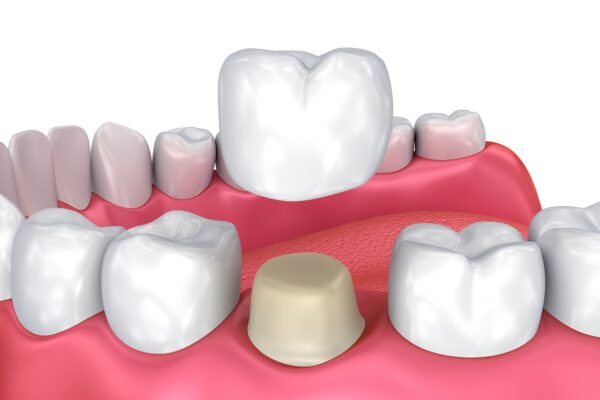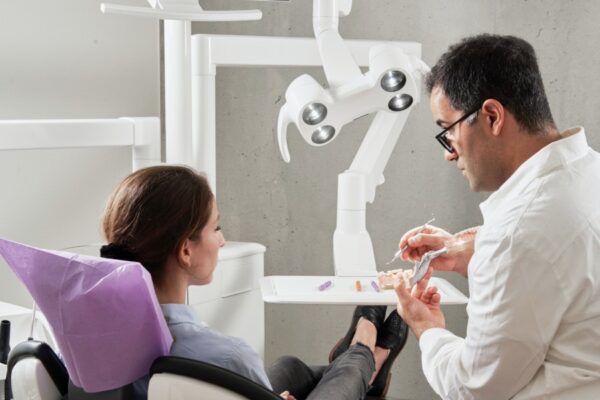If you’re wondering whether yoga might help with your irritable bowel syndrome (IBS), it actually might! Exercise is generally helpful for those who suffer from IBS, and yoga itself is especially promising due to its focus on the core and its gentle, low-impact poses. Below, we discuss how exercise in general and yoga, in particular, can help ease IBS and gastrointestinal symptoms. Then, we walk you through five yoga poses that are particularly beneficial for IBS.
How Exercise Can Help with IBS
Exercise is generally beneficial for people living with IBS, though some forms of exercise are more beneficial than others. For example, forms of exercise that involve high-impact or endurance activities can put a lot of strain on your gastrointestinal tract, stopping your digestion and causing all kinds of symptoms. Instead, you should opt for gentle, low-impact exercises that won’t jar your body too much, such as yoga.
Exercise helps lower your stress levels by causing your body to release feel-good hormones such as dopamine. Stress is a known contributing factor to various gastrointestinal conditions, including IBS, so lowering your stress can really help with managing your symptoms. Exercise also promotes better sleep by physically exhausting your muscles, which makes it easier to fall and stay asleep. The physical movement of exercise also causes the muscles in your core to contract, which pushes along food as well as gas. In turn, this helps promote regular bowel movements and reduces bloating.
As for yoga in particular, it has a mental as well as a physical component that further contributes to stress relief. Many yoga routines incorporate some form of meditation, which has been shown to lower stress levels. Many yoga moves also focus on the core, which is very beneficial for those living with IBS. The gentle nature of entry-level yoga, as well as the minimal equipment and space needed, also makes it a very accessible form of exercise for those looking for a way to get started with exercise.
While exercise is a great complement to other IBS therapies, such as following a low-FODMAP meal plan, it won’t alleviate your symptoms on its own. Your doctor will work with you to devise a treatment plan, which may include exercise alongside other strategies. In most cases, following an IBS meal plan and making dietary changes will result in the biggest change in your symptoms. If you struggle to meal prep the right dishes, a low-FODMAP meal delivery service can help you get the nutrition you need without upsetting your stomach.
Best Yoga Poses for IBS

Yoga poses work different areas of the body, and poses that focus on stretching and strengthening the core will be most helpful for people suffering from IBS. Here are some yoga poses that are especially beneficial for gastrointestinal issues:
Forward Fold
Stand with your legs about three feet apart, keeping your stance strong. Fold over at the waist, lowering your upper body as far towards the floor as it will go. You can rest your hands on the ground to support yourself or grab either both legs or one leg at a time if you want more of a challenge. Don’t lock out your knees. You can even bend them if keeping your legs straight is hard on your hamstrings. Take several deep breaths, focusing on lengthening the torso and stomach and keeping your spine straight.
Cat and Cow Pose
Get on your mat on all fours, with your hands directly under your shoulders and your knees directly under your hips so they form right angles. Slowly arch your back, forming a convex curve and then reverse the motion and press your stomach towards the floor, forming a concave curve. Repeat this motion several times, breathing slowly the whole time. This sequence of motions gently squeezes the core muscles, encouraging regular bowel movements as well as passing gas.
Lying Abdominal Twist
Begin by lying down on your mat with your legs extended. Take one arm and lay it at a right angle, as if you’re forming half of a capital T. Using your other hand, grab the opposite knee and bring it across the leg resting on the ground. Rest it on the ground if you can. If not, put a folded blanket or cushion below the knee. Take several deep breaths, holding the pose as long as you can and then repeat on the other side.

Seated Spinal Twist
Begin the seated spinal twist by sitting down on your mat and aligning your spine with the rest of your body. Bend one knee and place your leg on the ground, as if you are going to sit crisscross applesauce. Cross your other leg over the one on the floor and place your foot just on the outside of your knee. Slowly turn your upper body towards the knee. You can use your elbow to push against the top knee to add more intensity to the pose. Repeat on the other side. Twisting your stomach in this way helps to reduce bloat and aid in digestion.
Knees to Chest Pose
Lie down on your back on a mat. To perform a half pose, bend your knee and bring one leg to your chest. Hold the knee in place and take several deep breaths–then switch legs. For more of a challenge, you can also pull both knees into your chest at once and wrap your arms around them to hold them there. As for what this pose does for your bowels, let’s just say it’s known as the “wind relieving pose” for a reason.
Yoga can be a great complement to other forms of therapy, such as following an IBS meal plan. If you’re looking to get started with yoga for IBS, start with these five easy poses to help work your core.





